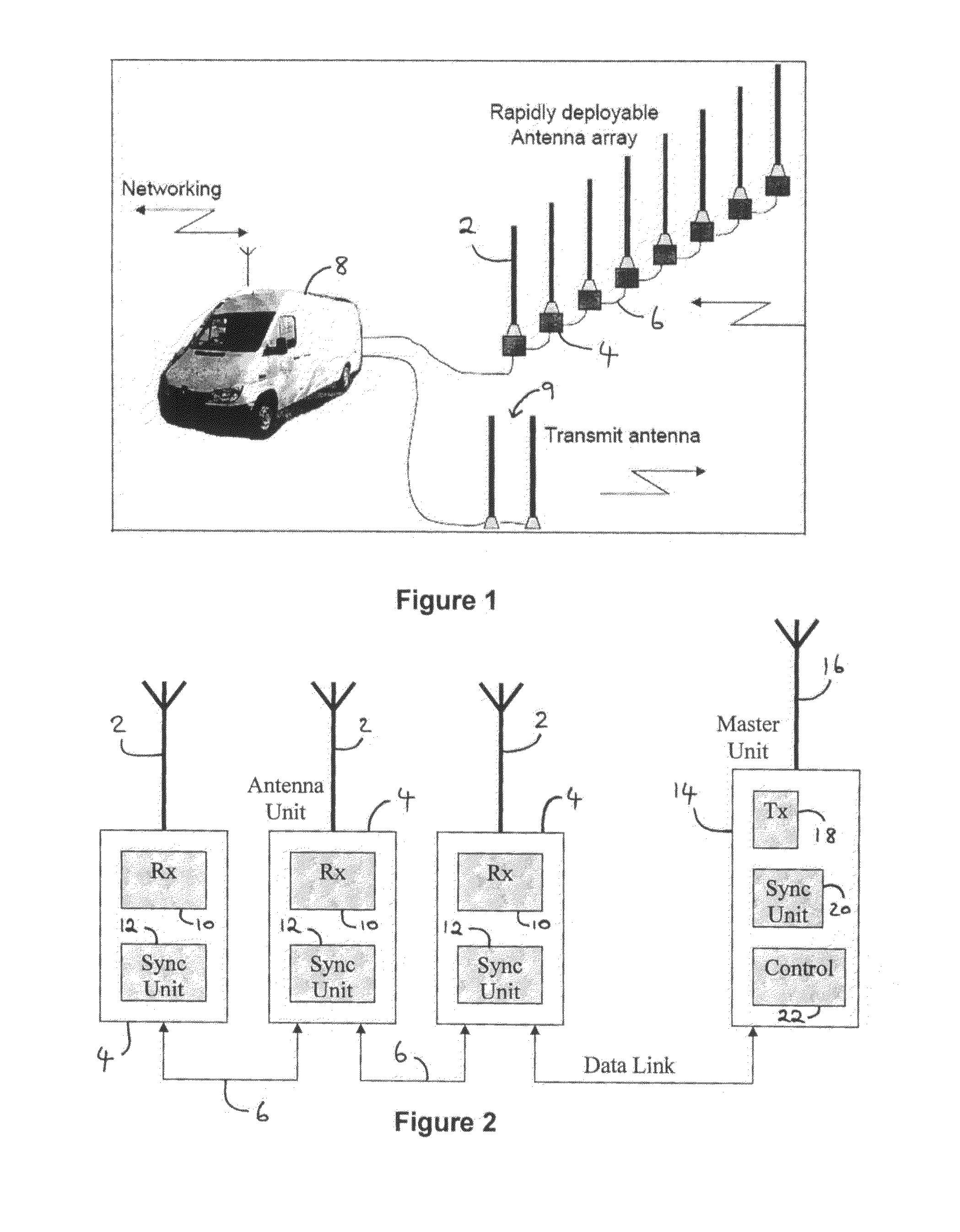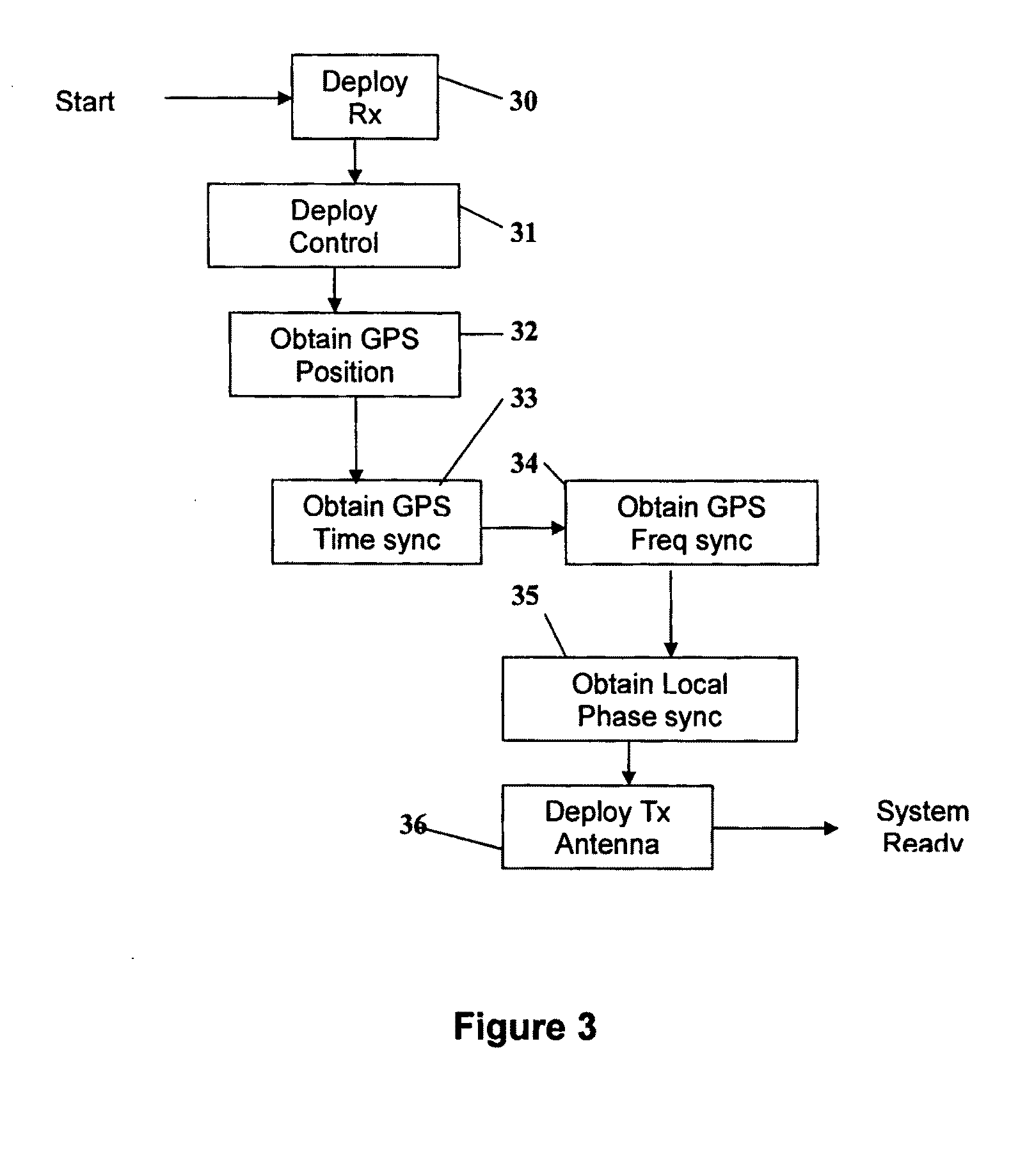Deployable Antenna System
a technology of antenna system and deployment, which is applied in the direction of satellite radio beaconing, measurement devices, instruments, etc., can solve the problems of not being suitable for a rapid deployment system and causing difficulties
- Summary
- Abstract
- Description
- Claims
- Application Information
AI Technical Summary
Benefits of technology
Problems solved by technology
Method used
Image
Examples
Embodiment Construction
[0020]Embodiments of the present invention will now be described in more detail, and by way of example only, with reference to the accompanying drawings.
[0021]The preferred embodiment of the invention relates to a distribution, reference, synchronisation and calibration scheme for a phased array receiving system of an HF radar system. It simplifies installation of the phased array and enables rapid deployment and automatic synchronisation and calibration of the array. It has particular application to HF radar where phased array antennas are physically large, but also has application to general phased array implementations.
[0022]The design of a phased array antenna involves a decision on how the elements will be deployed, how the signals to or from the elements will be distributed, how the signals will be synchronised and how the array will be aligned or calibrated. Additionally an attractive proposition is to integrate the receiver or transmitter with each antenna element, which fur...
PUM
 Login to View More
Login to View More Abstract
Description
Claims
Application Information
 Login to View More
Login to View More - R&D
- Intellectual Property
- Life Sciences
- Materials
- Tech Scout
- Unparalleled Data Quality
- Higher Quality Content
- 60% Fewer Hallucinations
Browse by: Latest US Patents, China's latest patents, Technical Efficacy Thesaurus, Application Domain, Technology Topic, Popular Technical Reports.
© 2025 PatSnap. All rights reserved.Legal|Privacy policy|Modern Slavery Act Transparency Statement|Sitemap|About US| Contact US: help@patsnap.com



